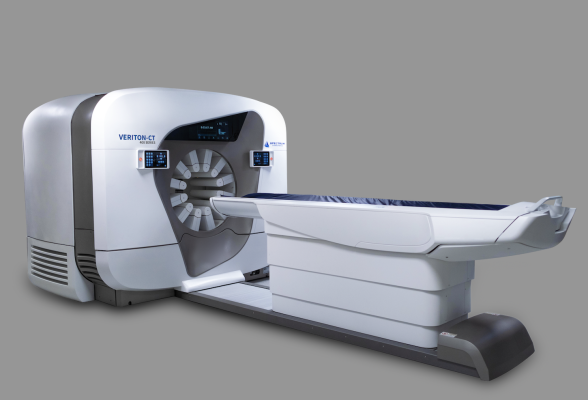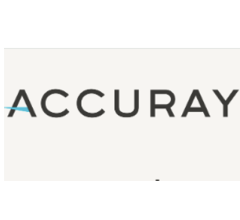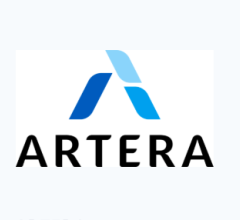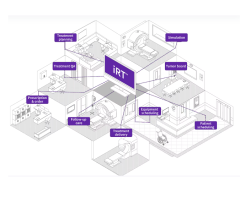
October 18, 2022 — Spectrum Dynamics announced its newest development in digital nuclear medicine imaging: the capability to image high energy isotopes using solid-state detector technology in a 3600-CZT based, wide-bore SPECT/CT configuration. This functionality is available in the new VERITON-CT 400 Series Digital SPECT/CT scanners, enabling total body, brain, heart and other imaging applications.
“This truly represents a transformation in how we will image high energy isotopes: with the sensitivity benefits of digital detector technology, advanced reconstruction algorithms and total body coverage in 3D, both patients and clinicians will benefit from this innovation”, said Nathaniel Roth, VP Research and Development and Clinical Research, Spectrum Dynamics.
The VERITON-CT 400 Series features Spectrum Dynamics’ radical design, with its 3600 ring-shaped gantry with 12 swiveling CZT detectors, that revolutionized nuclear medicine imaging industry in 2017. During the scan, the digital detectors automatically follow the patient’s body contour, providing exceptional proximity for increased sensitivity and better image quality. This design results in three times the volumetric sensitivity for routine 3D hybrid imaging without compromising patients comfort or department workflow. The scanner is available in 16-slice CT and 64-slice CT configuration enabling localization and attenuation correction for accurate quantification.
“The new VERITON-CT 400 has proved to be advantageous for high-energy tracers. In our nuclear medicine community, the main challenge now is to personalize and adapt targeted treatments to each individual. This requires precise determination of the distribution of delivered doses within the body. The scanner has the potential to do so with high quantitative accuracy and fast scan times to be used for a routine application”, said Prof. Pierre-Yves Marie, MD, Ph.D., Head Department of Nuclear Medicine, University Hospital of Nancy, France.
For more information: https://spectrum-dynamics.com/


 November 12, 2025
November 12, 2025 









